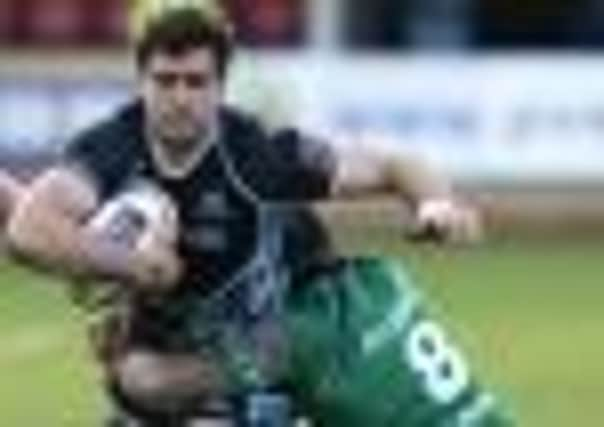Allan Massie: Five-second ruck rule would bring end to boring impasse


Certainly it would be a welcome amendment of the law. Five seconds after all is long enough to allow Usain Bolt to run half the length of a 100 metres track. So a scrum-half, or whoever is in the scrum-half position, should surely be able to get the ball away in that time.
The present practice is not only a bore, but unproductive. The longer the scrum-half hovers over the ball, as if waiting for the bomb disposal team to turn up, the more restricted are his options. Indeed there are only two: either the box kick or a short pass to a player standing off who will more often than not be tackled before he has breached the gain line. Whereupon we go through the same routine again – and again and, very often, again...
Advertisement
Hide AdAdvertisement
Hide AdThe purpose of the old-style ruck was to produce fast ball. This requires an advancing platform. The static ruck leads to stop-go play, more stop than go, sadly... Against Glasgow last week Leinster showed that it is still possible to win quick ball at the tackle-point, which was one reason why Glasgow had so little possession in the first half. Admittedly Leinster benefited from George Clancy’s indulgent interpretation of the law which allowed them to have players throwing themselves to the ground ahead of the tackled player, thus preventing any contest at the breakdown. This meant that Glasgow’s only hope of regaining possession was if Leinster knocked the ball on – which they very rarely did, some of their handling being of the highest class.
Clancy was rather stricter when the ball was thrown in to the lineout, calling up Pat MacArthur four times, I think, for squint throws, though at least two of them didn’t look any more squint to me than some of the Leinster ones which went unremarked by Mr Clancy. It’s strange, isn’t it, that referees should be alert to a line-out throw that veers marginally off the straight, while paying no attention to ludicrously squint put-ins at the scrum.
If the final score, with a two-one try advantage, somewhat flattered Glasgow, there was a great deal to admire in their performance. Their defensive organisation and commitment were outstanding. Leinster would surely have run a less determined side off the field and have had the game comfortably won by half-time. That said, Glasgow missed a good chance of getting back into contention when Duncan Weir missed two penalties with the score at 3-9. The first was perhaps rather ambitious, and it might have been better to have put the ball deep into the Leinster 22. The second was one he might be expected to kick 19 times out of 20. Nevertheless he did enough on the day, as he has done over the season, to justify his selection for the summer tour. That said, Ruaridh Jackson’s deft grubber kick which produced Glasgow’s last-minute try was beautifully conceived and executed.
Jackson may be the most naturally talented of the three contenders for the No 10 jersey, but a succession of injuries and Sean Lineen’s understandable preference for sticking with Weir, who had played so well while his rival was away at the World Cup, mean that he has had very limited opportunities this season, and has never been able to play himself into his best form. It is obviously good for Glasgow to have two international fly-halves. Whether it’s good for both of them is a difficult question.
There can be few complaints about the composition of the tour party, given the unavoidable absence of players on account of injury or, in Jim Hamilton’s case, suspension. It was sensible to leave Allan Jacobsen behind, for he must surely need a break if we are to get two more seasons out of him. I would have liked to see Alex Dunbar picked; he has been outstanding over the last few weeks. On the other hand Alex Grove looked very promising when he played in the autumn internationals a couple of years ago, and has had a somewhat raw deal ever since.
Finally, as the age-balance in the squad shifts and younger players are being brought through, this tour may be a last hurrah for one or two of the senior players such as Sean Lamont and Alastair Kellock. Both have younger ones snapping at their heels – which is just as it should be. Strangely the one position where there is no obvious young challenger is that in which even in the leanest years we have usually been spoiled for choice: scrum-half. The triumvirate of Mike Blair, Chris Cusiter and Rory Lawson are all now one side or other of the thirty mark. It’s likely that they have a few more seasons in them, injuries permitting, but unless Greig Laidlaw moves back from ten to nine, there is no replacement in sight.